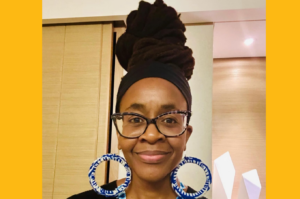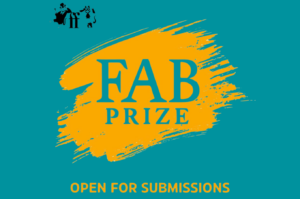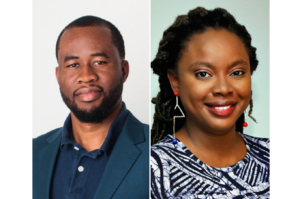
Agbowó Magazine has a new issue out this month titled “The Woman Issue”. An exciting mix of fiction, nonfiction, poetry, and visual arts, Issue 8 promises to deliver narratives depicting themes of African feminism.
Agbowó, the literary journal, was an off-shoot of the UITES WRITE collective and started in July 2017. Founded by Habeeb Kolade and Dolapo Amusat in 2015, UITES WRITE was a platform to showcase literary work by University of Ibadan students and alumni. Graduating and ambitious, the founding editorial team decided to carve out a literary magazine and open up to Africa. And, thus, Agbowó was born.
The latest issue is guest edited by Kechi Nomu and the cover art by Abisola Gbadamosi is titled “Emi Ni”. Featuring a Black woman on the cover with dark hair and lips, the issue reflects the boldness and passion emanating from the cover.
The authors featured in this issue include Ọrẹolúwa Oyinlọlá, Margaret Muthee, Thabi Moeketsi, Hajaarh Muhammad Bashar, Rahima Gambo, Tryphena L. Yeboah, Iyanuoluwa Adenle, Manthipe Moila, Michelle N’ankra Oppong, and Njeri Wangari. The visual arts section includes works by Abisola Gbadamosi and Iman Hassan.
Read Nomu’s stunning editorial note below:
To spend time with the works in this issue is to create, in this present moment, new coordinates of being. A safe locus where definitions and meanings pass between the reader and writer. All that this exchange entails: The accuracies and inaccuracies of self-invention and identification. The simultaneity of experience. The overlap of recognition and insight. That is the aim here. That is what became clear to me as the works came together.
This issue isn’t a definitive contemporary body of work that attempts to suggest womanness in 2023. It lives within the context of work that has come before it and work that will come after it. Yet it offers fresh takes. It brings news and perspectives that are missing, urgent or need reiteration.
The voices here, new, old and assured are contemplating individuation or asserting self-identification to varying degrees. The poets turn to science, sex or loss to communicate what is most urgent to them. They are ironic, philosophical, raw, diaristic, gut-punchy, experimental or all the above.
One writer wonders how a name acquires its status in society, and what self-identification means. Another writer suggests that self-identification is in fact pre-destination.
There is the immersive and image-rich recounting of a traveler’s walk that shifts between ecological inquiry and self-probe. At some point, the writer wonders: What happens when two women encounter themselves in nature, without a mediating language? What information passes between them? How does this mode of knowing become codified/preserved?
The places where women encounter each other in society are frequently unsafe. When they are safe at all, this safety is not assured, and subject to disruptions. A character in one short story comes to a moment of unsafety, where she witnesses a terrible injustice and is immobilized by it. She is removed from it and yet fully cognizant of the scene, the scale of it, and the knowledge that she can only witness.
The works here have in common a grasp of mythology, voice, and rootedness. They each determine their own form and reveal what information they choose or see fit.
I’m thrilled to share this issue with readers. Enjoy!
Read the issue here.









COMMENTS -
Reader Interactions